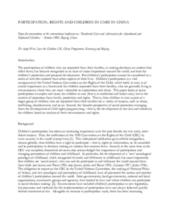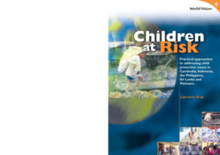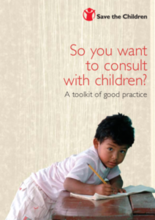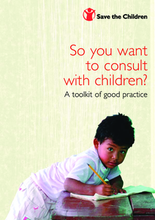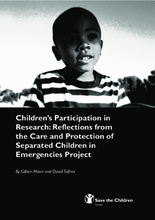Displaying 321 - 330 of 346
This paper defines concepts and highlights key topics around orphaned and vulnerable children. It stresses the importance of creating a child-friendly environment and utilizing a holistic approach to care, both which identify children as central participants in decision-making about care and placement.
Discusses approaches to protecting at-risk children in five Asian countries. Identifies programming and policy measures that effectively address child abuse. Emphasis on committing all levels of society to coordinated practical response.
A toolkit of good practices for involving children in consultation and policy processes. Includes an extensive guide to additional resources.
A comprehensive guide to organizing consultations with groups of children or young people, and the role of adults in creating a safe and enabling environment for meaningful child participation.
A sample survey designed to be used in interviewing parents and guardians of children ages six to twelve years old. The questions assess household financial security, socio-demographic and community characteristics, psychosocial intervention exposure, income generation intervention exposure, health status, HIV/AIDS prevention exposure, legal rights, and coping skills. Includes sample consent form.
Paper described ways in which children separated in emergencies have been involved in research about their community and lives. It focuses on identifying the most appropriate and achievable way to involve children given the reality of their context and circumstances, and includes an appendix of specific games to encourage child participation.
Outlines the psychosocial impacts of HIV/AIDS on children and suggests principles and activities to strengthen psychosocial support. Includes a brief list of follow-up resources.
Programmatic methodology and key steps for reintegrating institutionalized children back into the community in a post-conflict environment. Contains comprehensive assessment toolkit in document annex.
This paper describes a qualitative research study conducted in three villages in Malawi. It explores community mobilization and kinship care, as well as striking discrepancies between the perceptions of adults and children regarding care and support. The paper advocates for increased child decision-making, childcare protection policy, and support networks for orphaned children.
Compiled case descriptions from a diverse set of programs that work with and for adolescents. Analysis emphasizes common challenges and lessons learned for strategic planning.

